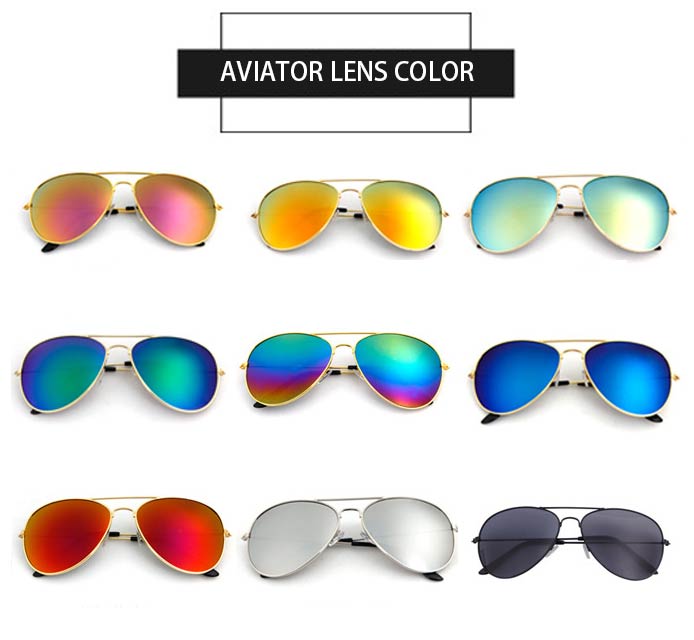Aviator sunglasses, or "pilot's glasses", were originally developed in 1936 by Bausch & Lomb for pilots to protect their eyes while flying, thus the name aviator. This kind of style sunglasses is credited with being one of the first popularized styles of sunglasses to be developed. In its military usage, the sunglasses replaced the outmoded flight goggles used previously, as they were lighter, thinner, and “more elegantly designed”.
Early in the 20th century, as test pilots began flying higher than Mount Everest, they had to defend themselves against temperatures as low as minus-80 degrees Fahrenheit. To survive the frigid blast, aviators wore leather hoods, and they insulated their eyes with fur-lined goggles. To lift those goggles for even an instant was to risk death.
The First World War was the first major military conflict to see the utilization of aircraft in both reconnaissance and attack missions. As United States aircraft took to the sky, pilots were naturally afflicted by the intense sun at higher altitudes. Combat pilots would often have to land with exhausted and strained eyes after flights with no eye protection. To remediate this issue, The Army Air Corp contracted a project to optics manufacturer Bausch & Lomb with the aim to have sun blocking glasses for all of their pilots.
By the late 1930s, aviators became a luxury item for sportsmen who needed their vision protected hunting or fishing. However, it would be World War II when the aviator really became the iconic fashion statement. Throughout the conflict, thousands of aviation personnel would receive their own aviators. Aviators became a well-known style of sunglasses when General Douglas MacArthur landed on a beach in the Philippines in World War II and newspaper photographers snapped several pictures of him wearing them that became a lasting image of the Second World War.
From that point on, the popularity of aviators grew exponentially. The associations shifted over time as different celebrities became associated with the style.
First, stars like Marlon Brando ushered in a tough-guy rebel vibe through the 1950s. Later, icons like Paul McCartney made Aviator sunglasses a typical look for hippies and rock stars, often opting for psychedelic colored lenses like light yellows and pinks over the original dark mirrored option. Finally, the 1980s strengthened the style’s place in Western culture as Tom Cruise and Val Kilmer rocked the shades in the wildly popular film Top Gun.
Tom Cruise in Movie Top Gun in 1986
As a frame designed for utility, aviators had some distinct and useful characteristics. The lenses are large, and formed in a teardrop shape that runs along the cheek line and effectively covers two-three times the size of the eyeball. At this early stage, the lenses were always dark and often mirrored. These factors made the sunglasses highly effective at blocking light, which was crucial for pilots’ vision as they flew.
Like the other popular styles of sunglasses, aviators are now made by pretty much every optical brand out there. While B&L held the first military contract, Randolph Engineering would later pick up the job, and they continue to produce them for the US armed forces today. But whether you’re trying to channel Douglas MacArthur’s stoic conservatism or Paul McCartney’s laid-back hippie vibes, the style is ubiquitous.
In addition, there are also a variety of aviator sunglasses to choose from VlookOptical. Come to pick a pair of your classical aviator glasses.












